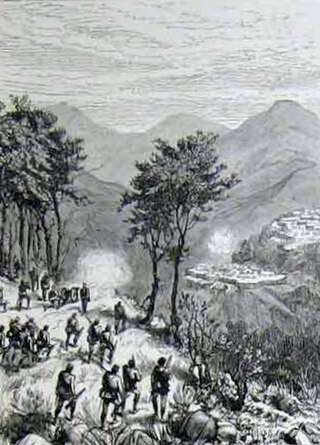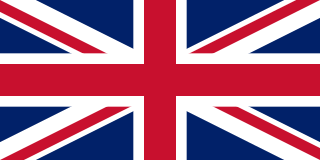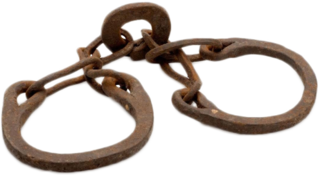Related Research Articles

Mautâm is a cyclic ecological phenomenon that occurs every 48–50 years in the northeastern Indian states of Tripura, Mizoram and Manipur, as well as in many places of Assam which are 30% covered by wild bamboo forests, and Chin State in Myanmar, particularly Hakha, Thantlang, Falam, Paletwa and Matupi Townships. It begins with a rat population boom, which in turn creates a widespread famine in those areas.

The British Indian Army Lushai Expedition of 1871 to 1872 was a punitive incursion under the command of Generals Brownlow and Bourchier. The objectives of the expedition were to rescue British subjects who had been captured by the Lushais in raids into Assam—including a six-year-old girl called Mary Winchester—and to convince the hill tribes of the region that they had nothing to gain and everything to lose by placing themselves in a hostile position towards the British Government.

The history of Christianity in Mizoram covers the origin and development of all forms of Christianity in Mizoram since the British occupation at the end of the 19th century until Indian independence. Christianity arrived due to British intervention in tribal warfare, raids of British plantations. The ensuing punitive British military expedition was called the Lushai Expedition of 1871. The subsequent annexation of the erstwhile Lushai Hills to the British Empire opened the gateway for British Christian missions to evangelise the Mizo people.
Sir John Ware Edgar was a British colonial administrator in British India.

Aizawl, formerly known as Aijal, is the capital city and the most populous city of Mizoram, India. It is also the third largest city in northeast India. It is situated atop a series of ridges, with an average elevation of around 1,132 metres above sea level. In 2024, the city has an estimated population of 415,000 people.

The Chin-Lushai Expedition of 1889–90 was a British punitive expedition in Burma and India against the tribes of the Chin Hills and Lushai Hills.

British rule in the Lushai Hills, spanning from the late 1889 to the 1947, commenced with the Chin-Lushai Expedition of 1889-90 leading to the formal establishment of the two administrative districts in 1889 and continued through the integration of the regions into the province of Assam with both districts being merged as the Lushai Hills until India gained independence in 1947.

The Mizo District, formerly called Lushai Hills District, was an autonomous district of the Indian state of Assam from 1947 till 1972 until it was granted the status of a Union Territory. This region was a significant part of Mizo history as it formally abolished the Mizo chieftainship system in 1954. It also encountered the 1959 Mautam famine, which led to the Mizo National Front uprising and the subsequent 20-year insurgency.

Mizo chieftainship refers to the system of chieftainship used by the Mizo people, which historically operated as a gerontocracy. The chieftain system persisted among the various clans and tribes from the precolonial era through to the British colonial period and Indian independence briefly. The Mizo Union advocated for abolishing chieftainship in Mizoram. The chieftainships of Mizoram were eventually disbanded with the Assam-Lushai District Act in 1954.

The Bawi system was an institution of slavery established under Lushai tribes. It remained in use in precolonial systems of chieftainship before being challenged by Christian mssionaries and political institutions such as the Mizo Union.
Suakpuilala, known by the British as Sukpilal, was a Lushai chieftain from the Sailo clan who held considerable influence over the western Lushai Hills. Sukpilal conducted a series of raids in British tea plantations and entered a diplomatic relationship with the British soon after. He was also a patron of bazaars and riverines established in the Lushai Hills as the first official trade channels. A defender of his sovereignty, Sukpilal's influence in the Lushai Hills was used by the British for mutual benefits.
Khalkam was a Lushai chief of the 19th century. He is known for being the son of Sukpilal and for being an enemy of the British, which led to the Lushai Rising. Khalkam was deported to Hazaribagh jail after British capture, where he committed suicide with his brother Lengpunga.

Vanhnuailiana was the chief of the Eastern Lushai Hills. Vonolel expanded his influence over the Sukte and Poi tribes in the east and attempted incursions into Naga territories in Manipur. He was considered the most powerful chief in the Eastern Lushai Hills until his death in 1871. He presided over several conflicts during his period of chieftainship.
Lalburha was a Lushai chief in the Eastern Lushai Hills and ruled the settlement of Champhai. Lalbura is recognised for being the third son of Vonolel and the target of the Lushai Expedition in 1871. His anti-British diplomacy led to his participation in the Lushai Rising following British annexation of the Lushai Hills.

The Lushai Rising was the conflict between the British and the Lushai chiefs following the annexation of the Lushai Hills after the Chin-Lushai Expedition. It concerned the Western chiefs, the Eastern chief and Southern chiefs separately at different intervals. By 1895, the Lushai resistance and rising was considered over.
Robert Blair McCabe was a British civil servant. He joined the Indian civil service in 1874 and was stationed in Assam in 1876. He is most well known for his pacification of the Naga Hills and the Lushai Hills, particularly the Lushai Rising. McCabe would die in 1897 after being struck by an earthquake.
The Lister Expedition was a punitive expedition in 1850 against Lushai chiefs such as Mora who raided Cachar. It is referred to as the Lister Expedition, which was headed by Colonel Frederick George Lister.
Charles Stewart Murray was a superintendent of police in the British Raj. Murray participated in the Chin-Lushai Expedition. Murray assisted John Shakespear, the field officer of the southern column in the expedition. After the annexation of the Lushai Hills, Murray was assigned as the first superintendent of the South Lushai Hills. However, his mishandling of authority with the Lushai tribes, such as Zakapa, would see him transferred to an assistant commissioner of the Chittagong Hill Tracts.
The following is the order of battle for the Lushai Expedition (1871-1872).
Rothangpuia was a Lushai chief of the Thangluaha dynasty. Rothangpuia established himself in the Chittagong Hill tracts and became a British ally after the Raban Expedition. He would become a close ally of Thomas Herbert Lewin and participate in the Lushai Expedition.
References
- ↑ Horn.
- 1 2 Reid 1942, p. 21.
- ↑ Reid 1942, p. 20.
- ↑ Reid 1942, p. 22.
- 1 2 Reid 1942, p. 23.
- ↑ Zou 2019, p. 576.
- ↑ Zou 2019, p. 577.
- ↑ Zorema 2007, p. 40.
- ↑ Chatterjee 1985, p. 190.
- ↑ McCall 1949, p. 59.
- ↑ National Archives of India.
- ↑ Reid 1942, p. 16.
- ↑ McCall 1949, p. 58-59.
- ↑ Chatterjee 1995, p. 165.
- ↑ Sen 2022, p. 1523.
- ↑ Reid 1942, p. 25.
- ↑ Chatterjee 2009, p. 269.